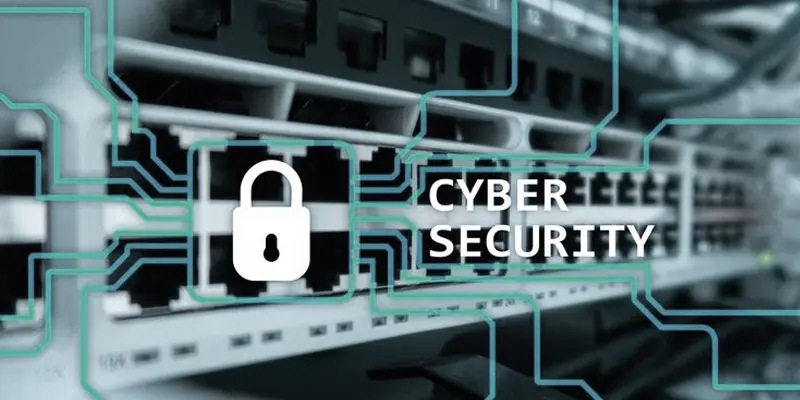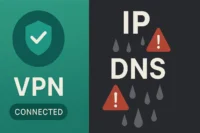SD-WAN Security | How It Protects Your Network from Cyber Threats
Published: 11 Feb 2025
SD WAN Security
SD-WAN security is essential as cyber threats keep rising, with over 60% of enterprises facing security breaches. But is your SD-WAN truly secure, or are hidden risks exposing your network? Many businesses struggle with data breaches, weak encryption, and complex security setups. From encrypted tunnels to zero-trust access, SD-WAN security provides the advanced protection your network needs.
What is SD WAN Security
SD-WAN security protects networks by encrypting data, blocking threats, and ensuring safe connections between locations. It helps businesses keep their network fast and secure.

SD WAN Security Features
SD-WAN security feature protect data, control network access, and detect threats to keep connections safe and reliable.
- Encryption
- Traffic segmentation
- Secure access control
- Threat detection
- Firewall protection
- Zero Trust security
- Intrusion prevention
- Secure web gateway
- Cloud security integration
- Real-time monitoring
- Multi-Factor Authentication (MFA)
- Threat Intelligence Integration
- Data Loss Prevention (DLP)
- Anomaly Detection & Behavioral Analytics
- Cloud Access Security Broker (CASB)
- DDoS Protection
- Secure DNS Filtering
- Identity-Based Access Control
Encryption
Encryption in SD-WAN secures data by converting it into unreadable code, protecting it from hackers. Only authorized users with the right key can decode and access the data. This ensures safe communication across networks.
Traffic Segmentation
Traffic segmentation in SD-WAN separates network traffic into different paths based on security needs. This prevents unauthorized access and limits the spread of cyber threats. It helps keep sensitive data safe while improving network performance.
Secure Access Control
Secure access control in SD-WAN ensures that only authorized users and devices can connect to the network.It makes use of authentication techniques like role-based permissions, multi-factor authentication (MFA), and passwords. This lessens the chance of data breaches and illegal access.
Threat Detection
Threat detection in SD-WAN monitors network traffic for suspicious activity, such as malware or hacking attempts. It uses real-time analysis and security tools to identify and stop threats before they cause harm. This helps keep the network safe from cyber attacks.
Firewall Protection
Firewall protection in SD-WAN blocks unauthorized access and filters harmful traffic to keep the network secure. It prevents cyber risks by serving as a barrier between networks that are trustworthy and those that are not. This helps protect data and ensures safe communication.
Zero Trust Security
Zero Trust security in SD-WAN follows the principle of never trust, always verify. It requires continuous authentication and strict access controls for every user and device. This lowers the possibility of data breaches and illegal access.
Intrusion Prevention
Intrusion prevention in SD-WAN detects and blocks cyber threats before they harm the network. It analyzes traffic for suspicious activity and automatically stops attacks like malware and hacking attempts. This helps keep data and systems secure.
Secure Web Gateway
A secure web gateway in SD-WAN protects users from harmful websites, malware, and online threats. It filters web traffic, blocks unsafe content, and enforces security policies. This keeps internet access safe and prevents cyber risks.
Cloud Security Integration
Cloud security integration in SD-WAN protects data and applications stored in the cloud. It ensures secure connections, encrypts traffic, and prevents unauthorized access. This helps businesses safely use cloud services without security risks.
Real-Time Monitoring
Real-time monitoring in SD-WAN continuously tracks network activity to detect issues and security threats instantly. It provides live insights, alerts, and automated responses to keep the network secure and running smoothly. This helps prevent downtime and cyber attacks.
Data Loss Prevention
Data Loss Prevention (DLP) is a security method that prevents sensitive information from being lost, exposed, or stolen. It monitors and controls data transfers to block unauthorized access. DLP helps protect important files, emails, and cloud data from cyber threats.
Cloud Access Security Broker
One security technology which safeguards users and data when utilising cloud services is a Cloud Access Security Broker.It monitors activity, enforces security policies, and prevents threats like data leaks or unauthorized access. CASB helps businesses keep their cloud applications safe and compliant.
Multi-Factor Authentication (MFA)
Additional protection is provided by Multi-Factor Authentication (MFA), which requires more than just a password to log in. It may ask for a code from your phone or fingerprint to confirm your identity. This helps protect accounts from hackers, even if they steal your password.
Threat Intelligence Integration
Threat Intelligence Integration helps security systems detect and stop cyber threats faster. It collects and analyzes data about hackers, malware, and attacks in real time. This allows businesses to stay ahead of threats and protect their networks better.
Anomaly Detection & Behavioral Analytics
Anomaly Detection & Behavioral Analytics help find unusual activities in a network that may signal a cyber threat. They track user behavior and detect suspicious actions, like unauthorized access or data theft. This helps stop attacks before they cause damage.
DDoS Protection
DDoS Protection stops cyber attacks that try to overload a network by flooding it with traffic. It detects and blocks harmful requests to keep websites and services running smoothly. This helps prevent downtime and keeps businesses online.
Secure DNS Filtering
Secure DNS Filtering blocks access to harmful websites to protect users from cyber threats. It prevents malware, phishing, and unsafe content by filtering bad domains. This keeps networks safe and ensures secure browsing.
Identity-Based Access Control
Only authorised users are able to access particular data or systems thanks to identity-based access control. It uses a user’s identity, roles, and permissions to verify them. This keeps private information safe and helps stop unwanted access.
SD WAN Cyber Security
SD-WAN cyber security is crucial as cyber attacks have increased by over 50% in recent years, targeting vulnerable networks. But here’s the real question—does your SD-WAN truly protect your data, or is it just another entry point for hackers?
Many businesses struggle with securing remote branches, managing multiple security policies, and preventing data breaches. Imagine losing sensitive customer data just because your SD-WAN wasn’t properly secured. That’s why understanding SD-WAN cyber security is no longer optional—it’s a necessity.

Best Practices for Securing SD-WAN
- Use Strong Encryption: Protect data by encrypting all network traffic.
- Enable Multi-Factor Authentication (MFA): Add extra security layers for user access.
- Segment Network Traffic: Separate sensitive data from regular traffic to limit risks.
- Apply Zero Trust Security: Verify every user and device before granting access.
- Keep Software Updated: Regularly update SD-WAN devices to fix security gaps.
- Monitor Network in Real-Time: Track traffic and detect threats instantly.
- Use Next-Gen Firewalls: Block unauthorized access and filter harmful traffic.
- Limit User Access: Give permissions based on roles to prevent unauthorized changes.
- Integrate with Cloud Security: Secure data and apps in the cloud.
- Regularly Review Security Policies: Adjust rules to protect against new threats.
SD WAN Security Issues
SD-WAN security faces risks like cyber attacks, data breaches, and unauthorized access. Hackers can exploit weak encryption or misconfigured settings to steal sensitive information. Without proper security, businesses may face downtime and financial losses.
Another challenge is managing multiple security policies across different locations. If not handled well, gaps in protection can leave networks exposed. Regular monitoring, updates, and strong access controls are needed to keep SD-WAN safe.
SD WAN Security Benefits
- Stronger Data Protection: Encrypts traffic to keep data safe from hackers.
- Better Access Control: Ensures only authorized users can connect to the network.
- Secure Cloud Access: Protects cloud-based applications and data.
- Network Segmentation: Separates traffic to prevent the spread of attacks.
- Reduced Downtime: Detects and fixes security issues quickly to keep the network running.
- Enhanced Firewall Protection: Blocks harmful traffic and unauthorized access.
- Safer Remote Work: Provides secure connections for employees working from different locations.
- Easier Security Management: Centralized control makes it simple to enforce security policies.
Conclusion About What is SD WAN in Cyber Security
Identity-Based Access Control ensures that only the right people can access specific data or systems, making it a key part of SD-WAN security. I highly recommend businesses implement strong encryption, Zero Trust policies, and continuous monitoring to prevent cyber threats. Investing in a secure SD-WAN solution will protect your data, users, and network from evolving risks. Ready to strengthen your security? Explore the best SD-WAN security solutions today.
FAQS – SD WAN Cybersecurity
SD-WAN improves network speed, security, and reliability by intelligently managing traffic. It also reduces costs and simplifies IT operations.
A Versa device is a hardware or virtual appliance used for SD-WAN, security, and cloud networking in businesses.
Yes, Versa SD-WAN includes built-in firewall features to protect networks from cyber threats and unauthorized access.
A security system called SASE (Secure Access Service Edge) protects people and data everywhere by fusing cloud-based security with SD-WAN.
Versa Analytics is a tool that provides real-time network insights, security monitoring, and performance reports for better IT management.
SD-WAN enhances security by using encryption, firewalls, Zero Trust access, and threat detection to protect network traffic.
Versa is used for SD-WAN, network security, cloud connectivity, and performance optimization in businesses of all sizes.

- Be Respectful
- Stay Relevant
- Stay Positive
- True Feedback
- Encourage Discussion
- Avoid Spamming
- No Fake News
- Don't Copy-Paste
- No Personal Attacks

- Be Respectful
- Stay Relevant
- Stay Positive
- True Feedback
- Encourage Discussion
- Avoid Spamming
- No Fake News
- Don't Copy-Paste
- No Personal Attacks





